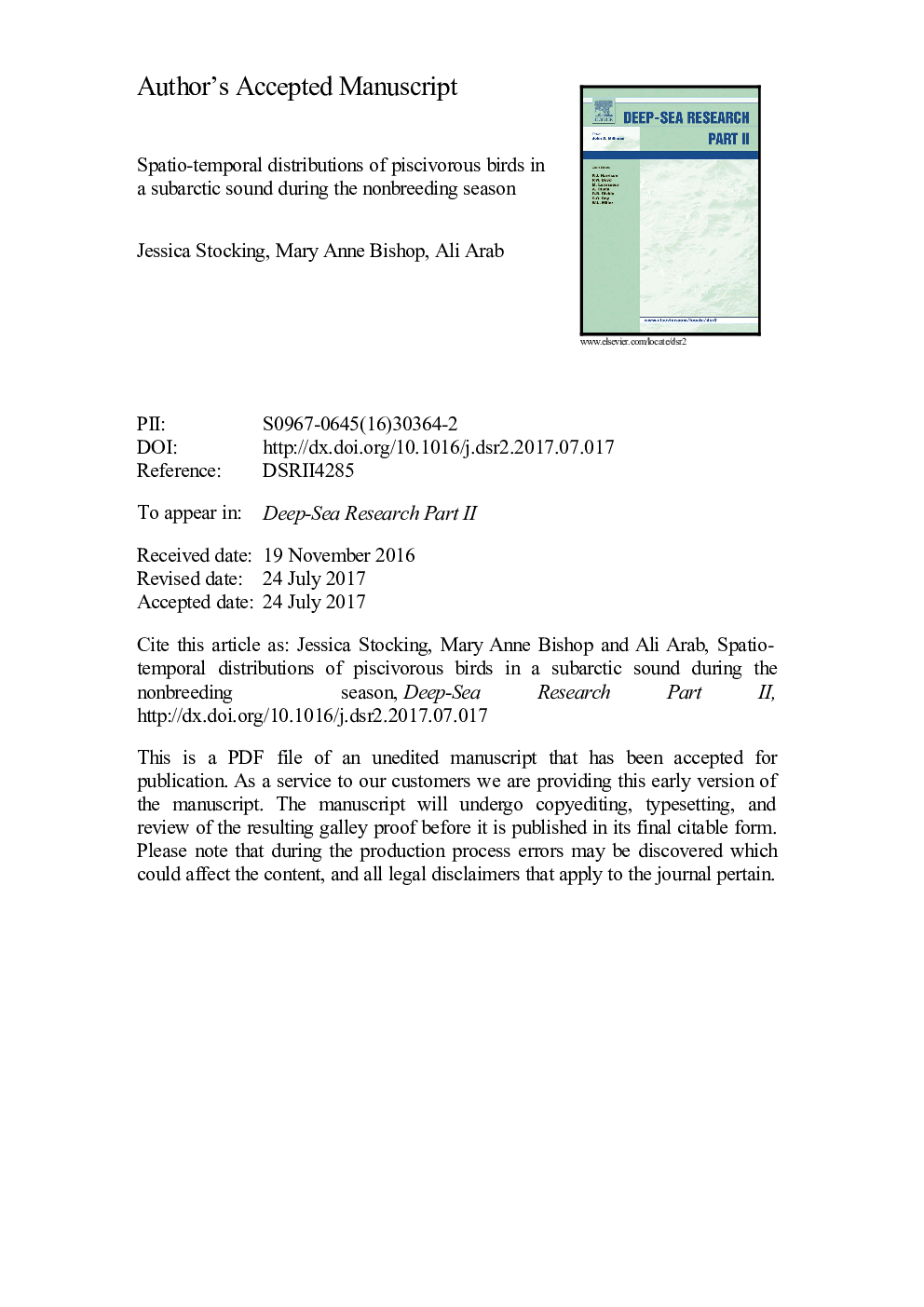| Article ID | Journal | Published Year | Pages | File Type |
|---|---|---|---|---|
| 8884510 | Deep Sea Research Part II: Topical Studies in Oceanography | 2018 | 42 Pages |
Abstract
Understanding bird distributions outside of the breeding season may help to identify important criteria for winter refuge. We surveyed marine birds in Prince William Sound, Alaska, USA over nine winters from 2007 to 2016. Our objectives were twofold: to examine the seasonal patterns of piscivorous species overwintering in Prince William Sound, and to explore the relationships between spatial covariates and bird distributions, accounting for inherent spatial structure. We used hurdle models to examine nine species groups of piscivorous seabirds: loons, grebes, cormorants, mergansers, large gulls, small gulls, kittiwakes, Brachyramphus murrelets, and murres. Seven groups showed pronounced seasonal patterns. The models with the most support identified water depth and distance to shore as key environmental covariates, while habitat type, wave exposure, sea surface temperature and seafloor slope had less support. Environmental associations are consistent with the available knowledge of forage fish distribution during this time, but studies that address habitat associations of prey fish in winter could strengthen our understanding of processes in Prince William Sound.
Keywords
Related Topics
Physical Sciences and Engineering
Earth and Planetary Sciences
Geology
Authors
Jessica Stocking, Mary Anne Bishop, Ali Arab,
